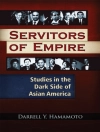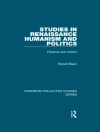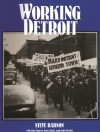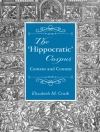Here, for the first time in English translation, are contemporary accounts of working-class life during the final decades of the Russian Empire. Written by workers and other close observers of their milieu, these five selections recreate the world of Russian labor during a period of rapid industrialization and social change, a world far more complex and varied than has often been assumed.
The accounts in
The Russian Worker explore the daily experiences, social relations, and aspirations of factory, artisanal, and sales-clerical workers, both in and outside the place of employment. Through the eyes of contemporaries we see the routine, the organization of work, and authority relations on the shop floor as well as conditions that workers encountered in providing for food and lodging and their experiences in the areas of religion, recreation, cultural activities, family ties, and links with the countryside.
With its vivid and detailed descriptions of working-class life,
The Russian Worker provides new material on such important topics as the formation of workers’ social identities, the position of women, patterns of stratification, and workers’ concepts of status differentiation. An introductory essay by Victoria Bonnell places the selections in an historical context and examines some of the central issues in the study of Russian labor. The collection will be of value not only to specialists in the Russian field, but also to historians, sociologists, economists, and others with an interest in the sociology of work, and the history of working women.
Here, for the first time in English translation, are contemporary accounts of working-class life during the final decades of the Russian Empire. Written by workers and other close observers of their milieu, these five selections recreate the world of Russ
Tabla de materias
List of Illustrations
Preface
Note on Translation
Note on Dates and Transliteration
Introduction
PART ONE: METALWORKERS
1. S. I. Kanatchikov,
From the Story of My Life
2. P. Timofeev,
What the Factory Worker Lives By
PART TWO: TEXTILE WORKERS
3. F. P. Pavlov,
Ten Years of Experience (Excerpts from Reminiscences, Impressions, and Observations of Factory Life)
PART THREE: ARTISANAL WORKERS
4. E. A. Oliunina,
The Tailoring Trade in Moscow and the Villages of Moscow and Riazan
PART FOUR: SALES-CLERICAL WORKERS
5. A. M. Gudvan,
Essays on the History of the Movement of Sales-Clerical Workers in Russia
Selected Bibliography
Sobre el autor
Victoria E. Bonnell is Professor of Sociology and Chair of the Center for Slavic and East European Studies at the University of California, Berkeley. She is the author of Iconography of Power: Soviet Political Posters under Lenin and Stalin (California, 1997) and Roots of Rebellion: Workers’ Politics and Organizations in St. Petersburg and Moscow, 1900-1914 (California, 1983).












